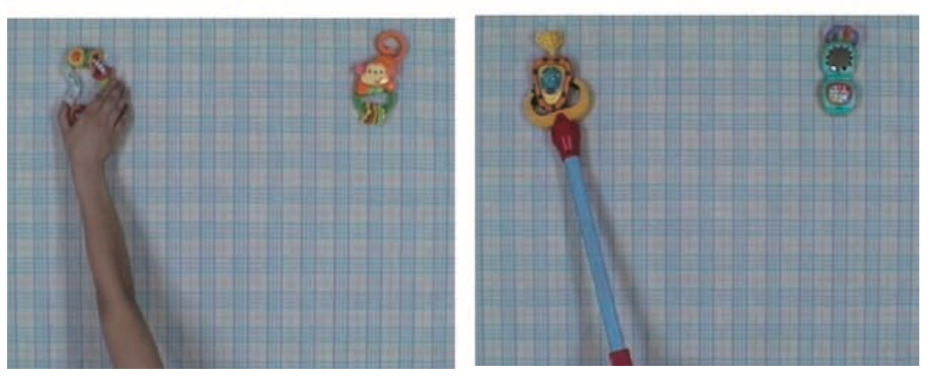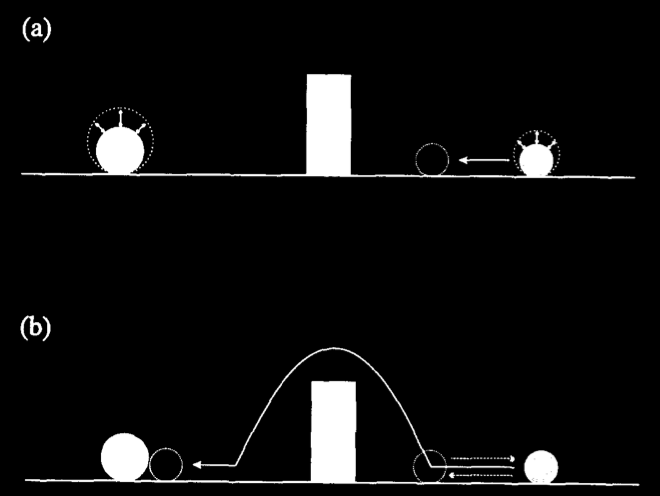Click here and press the right key for the next slide.
(This may not work on mobile or ipad. You can try using chrome or firefox, but even that may fail. Sorry.)
also ...
Press the left key to go backwards (or swipe right)
Press n to toggle whether notes are shown (or add '?notes' to the url before the #)
Press m or double tap to slide thumbnails (menu)
Press ? at any time to show the keyboard shortcuts
A Puzzle about Goal Tracking

Kanakogi and Itakura, 2011 figure 1C (part)

Gergely et al 1995, figure 1

Gergely et al 1995, figure 3

Gergely et al 1995, figure 5

Heider and Simmel, figure 1


Csibra et al 2003, figure 6
Puzzle
In infants under 10 months,
it appears that
some,
but not all,
goal-tracking is limited by their abilities to act.
Conclusion
Puzzle
In infants under 10 months,
it appears that
some,
but not all,
goal-tracking is limited by their abilities to act ...
| The Simple View | Motor Conjecture | |
| What is the function to be computed? | [Teleological Stance] | [Teleological Stance] |
| How is this function computed? | By reasoning from beliefs. | By using motor processes ‘in reverse’. |
| Why is goal-tracking limited by action ability? | ??? | Because both rely on motor processes. |
| Why is goal-tracking not so always limited? | ??? |